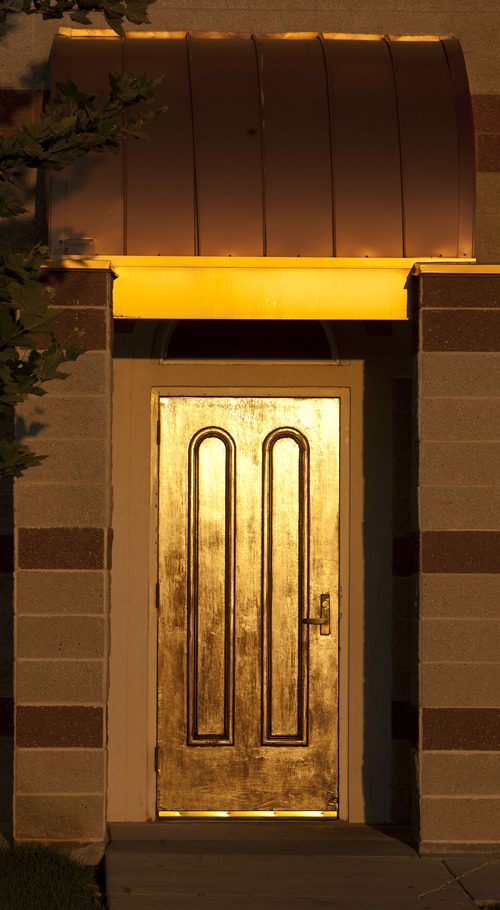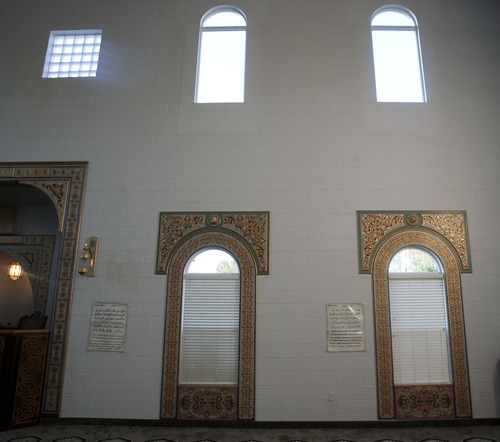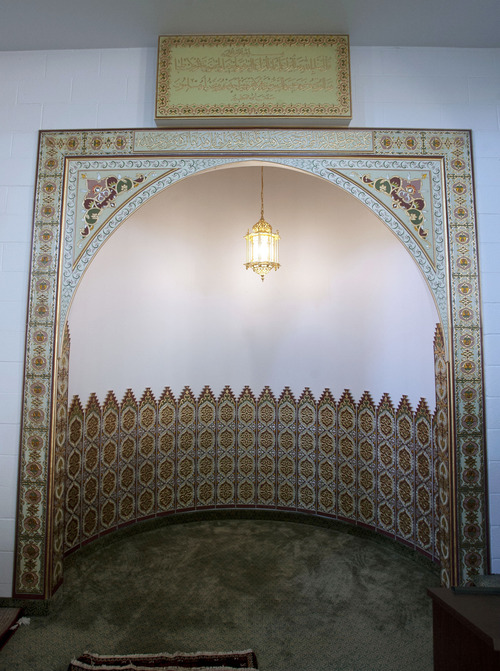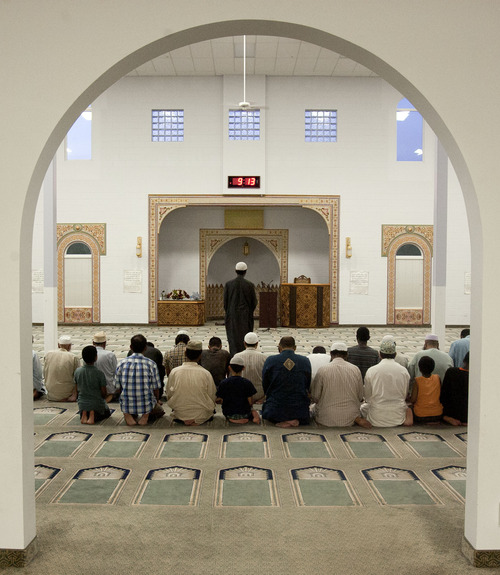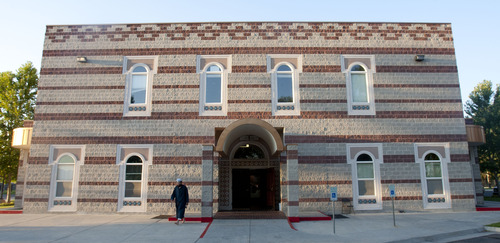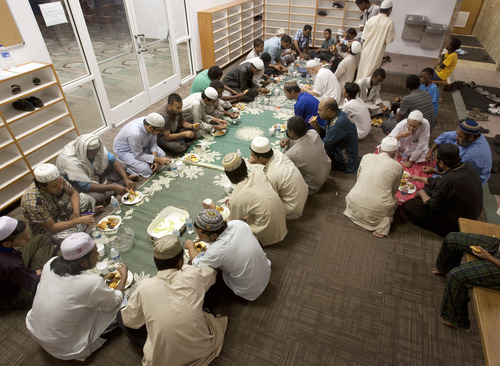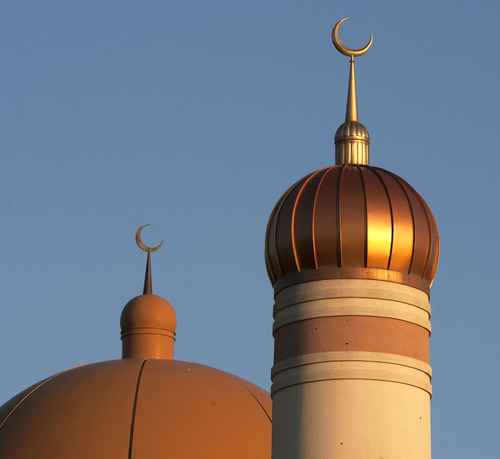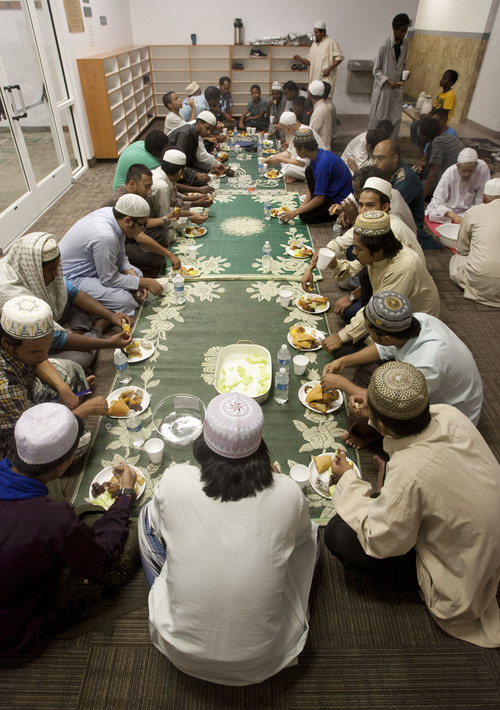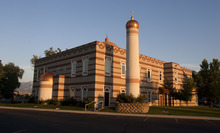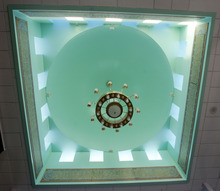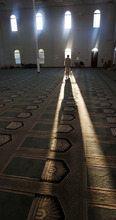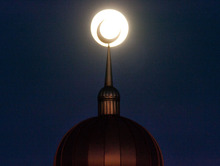This is an archived article that was published on sltrib.com in 2013, and information in the article may be outdated. It is provided only for personal research purposes and may not be reprinted.
Members of the building committee came to Murray architect Kimly Mangum in 1992 and told him what they wanted: a big box.
No, it wasn't for a Wal-Mart or a Shopko or a Kmart.
It was for a mosque.
You see, they had 2.75 acres in West Valley City, but only $600,000 for the sacred space. All they needed was a prayer hall, partitions to separate the sexes during services, distinct washing areas and an indented section for an imam to lead prayers.
Mangum got no more specific instructions than that.
So the architect, who previously had designed Southern Baptist chapels and Mormon meetinghouses but never a mosque, began to research Islamic architecture and to visit other sites.
On this budget, he knew, the mosque would not have the grandeur of Istanbul's Blue Mosque or the majesty of Jerusalem's Dome of the Rock. But could a boxy building exude a real sense of Muslim identity and make its mark on Utah's religious skyline?
Twenty years later, Mangum's creation is the state's most prominent — and only original — mosque.
It is known as the Khadeeja Islamic Center — named for the Prophet Muhammad's first wife — and its gold dome and towering minaret are visible from a freeway and the westbound TRAX line.
"The clients seemed pleased," Mangum says. "It definitely has presence."
This month, Utah Muslims from across the valley gather there nightly to pray and break their Ramadan fast. But few know what it took to create — and pay for — the mosque's Islamic details.
In the first phase, the building was a single story with men praying in the main hall, facing the northeast while touching their foreheads on a carpet brought in from Egypt. Women prayed separately, behind a temporary divider.
A U-shaped cove, where the imam stands, was carved out of the north wall. It featured a kind of step ladder where the imam stands to give the sermon. The extra height helps, especially during Friday services, with the mosque's large audience.
The wudu, or washrooms, where men and women carefully scrubbed their feet and arms clean, used turquoise tiles. The doors on the south end were topped by half barrels and arches.
Khadeeja's first structure was completed in 1994 and included some 5,000 square feet, yet was too small almost from the start, says Masood Ul-Hasan, who was on the center's governing committee at the time.
"A lot of refugees from different countries arrived," he says. "By 1999, it was pretty full."
So Mangum set to work on phase two.
The minaret got taller and was moved from the southeast to the northwest corner. The women got their own space and washing area on a newly added second story. A gold dome — topped with a crescent moon — completed the look. Arabic calligraphy now covered the walls, while a new chandelier was hung from the ceiling.
Overall, the space grew by 10,000 square feet, now being able to hold at least 1,500 people.
The cost for the second phase? A million bucks.
"We paid every penny," Ul-Hasan says, "before it was done."
Today, he says, "when you go inside our mosque, you get a good feeling."
Unlike other mosques in other places, it never encountered bad feelings, either. Utah Muslims faced no opposition to either erecting the mosque in the first place or adding to it later, says Ul-Hasan's wife, Noor Ul-Hasan.
"When we first built it," she says, then-West Valley City Mayor Brent Anderson "was happy to have a mosque in his city — and even came to the groundbreaking."
In the years since the mosque's completion in 2002, the Islamic Society has acquired several acres east and west of the center, according to Khadeeja's website, "increasing its total worth to several million dollars."
Now the members have plans to add an Islamic school and community hall.
It is all very satisfying to Noor Ul-Hasan.
Khadeeja's exquisite chandelier is a replica of one that lights Muhammad's mosque in Medina, which the Utah mother has visited.
"Seeing it transports me back to the holy city," she says. "I am reminded that this is my Islamic faith — connected across the continents."
And, at her mosque, it began with a box.
About Khadeeja Islamic Center
Location • 1019 W. Parkway Ave. (2430 South), West Valley City
Built • 1994, additions in 2002
Size • 15,000 square feet
Features • Gold dome, free-standing minaret, Arabic calligraphy, second-floor women's area, turquoise-tiled washrooms —
'Where We Worship' series
The Salt Lake Tribune is featuring Utah's sacred spaces this year. To read previous stories in this monthly series, go to http://www.sltrib.com
Today • West Valley City's Khadeeja Islamic Center


